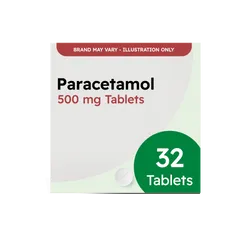
Forceval Capsules Pack of 90 are formulated to act as a therapeutic nutritional adjunct, especially when your intake or absorption of vital vitamins and minerals might be suboptimal. This can occur in various situations, ensuring your body receives the necessary nutrients it needs to thrive.
Why Choose Forceval Capsules Pack of 90?
These capsules are particularly useful in circumstances such as:
- Supporting Nutritional Intake: When dietary intake of vitamins and minerals is insufficient, for example, during illness, recovery from surgery, or with specific dietary restrictions (e.g., gluten-free diets or renal diets).
- Aiding Absorption: In conditions where nutrient absorption is compromised, such as malabsorption, inflammatory bowel disease, or Crohn's disease, or when certain medications affect nutrient uptake.
- Convalescence and Recovery: Assisting the body during recovery from illness (e.g., following chemotherapy or radiotherapy) or surgery, especially when appetite or nutritional intake is inadequate.
- Specific Dietary Needs: As an adjunct in synthetic diets (e.g., in phenylketonuria, galactosaemia, and ketogenic diets) or where food intolerances exist.
Each Forceval Capsules Pack of 90 delivers a carefully balanced blend of micronutrients that play crucial roles across various bodily functions. Below is a summary of the vital roles played by the vitamins and minerals contained:
Essential Vitamins for Your Health
- Vitamin A (as ß-Carotene): Important for vision, skin health, and immune function.
- Vitamin D2 (Ergocalciferol): Essential for calcium and phosphate absorption, crucial for healthy bones and teeth.
- B Vitamins (B1, B2, B6, B12, Nicotinamide, Pantothenic Acid, Folic Acid, Biotin): Play vital roles in energy metabolism, nervous system function, red blood cell formation, and protein synthesis.
- Vitamin C (Ascorbic Acid): Supports immune function, collagen formation for healthy skin and blood vessels, and iron absorption.
- Vitamin E (dl-α-Tocopheryl Acetate): A powerful antioxidant that helps protect cells from free radical damage.
Vital Minerals & Trace Elements
- Calcium & Phosphorus: Fundamental for strong bones and teeth, nerve and muscle function.
- Iron: Essential for oxygen transport in the blood, preventing anaemia.
- Copper: Required for various enzyme systems.
- Magnesium: Involved in muscle and nerve function, energy release, and bone health.
- Potassium: Key for cell function, fluid balance, and nerve impulses.
- Zinc: Supports immune system, cell growth, and metabolism.
- Iodine: Crucial for thyroid hormone production, regulating metabolism.
- Manganese: Involved in enzyme systems and cell structure maintenance.
- Selenium: Protects cells from oxidative damage.
- Chromium: Essential trace element involved in carbohydrate metabolism.
- Molybdenum: An essential trace element, though deficiency is rare.
Forceval Capsules Pack of 90 provide a broad spectrum of nutrients, making them a convenient option for those looking to supplement their diet with essential vitamins and minerals.














